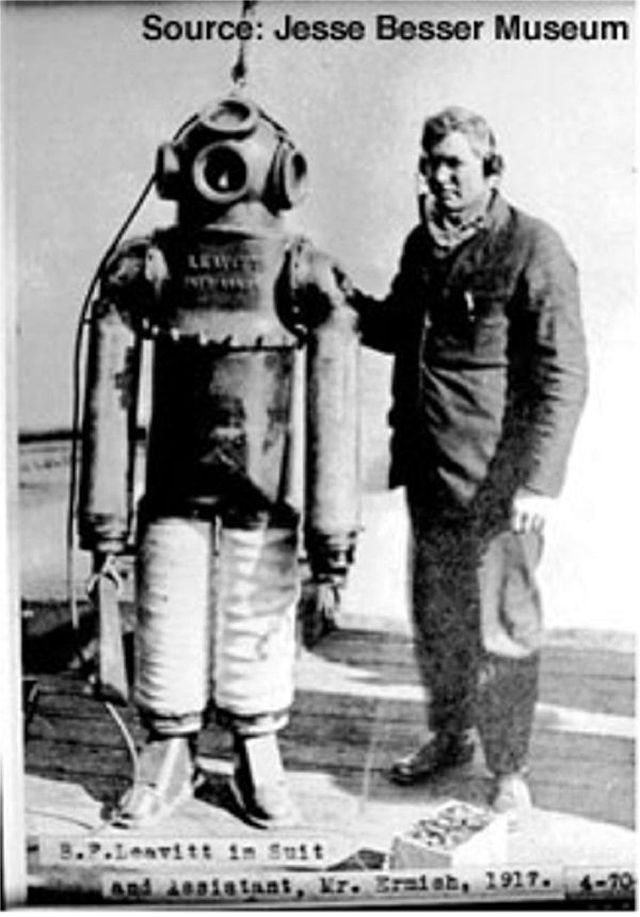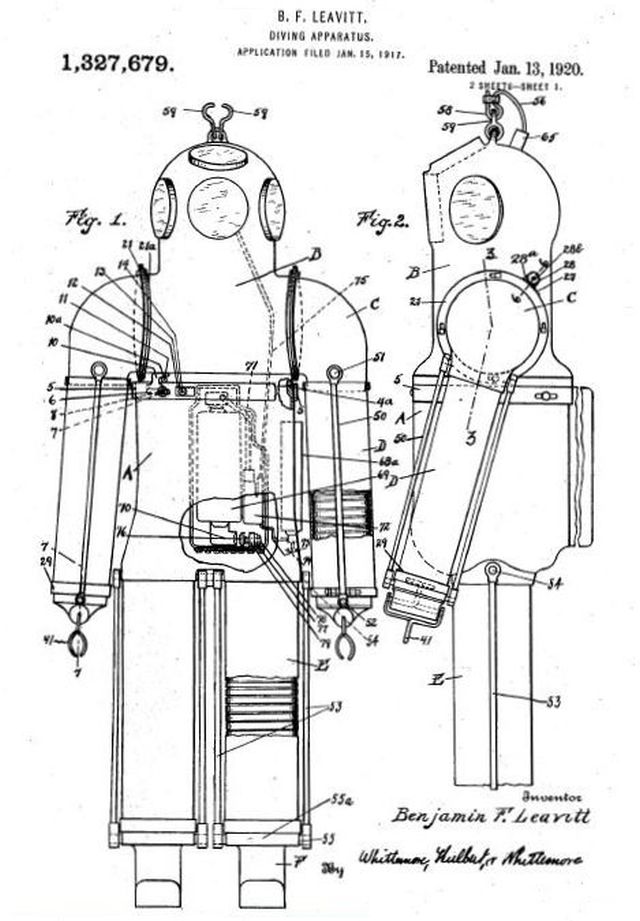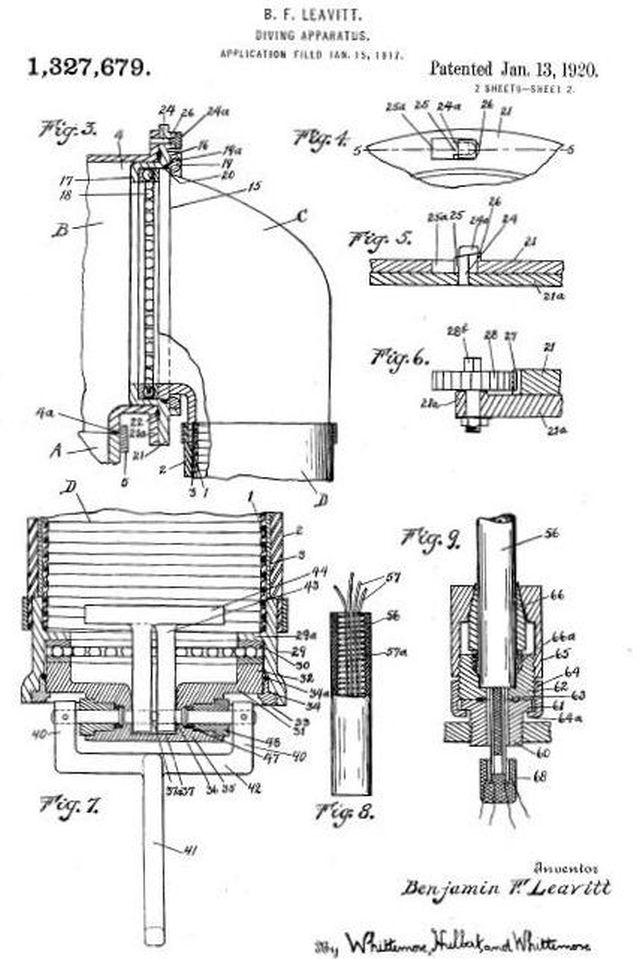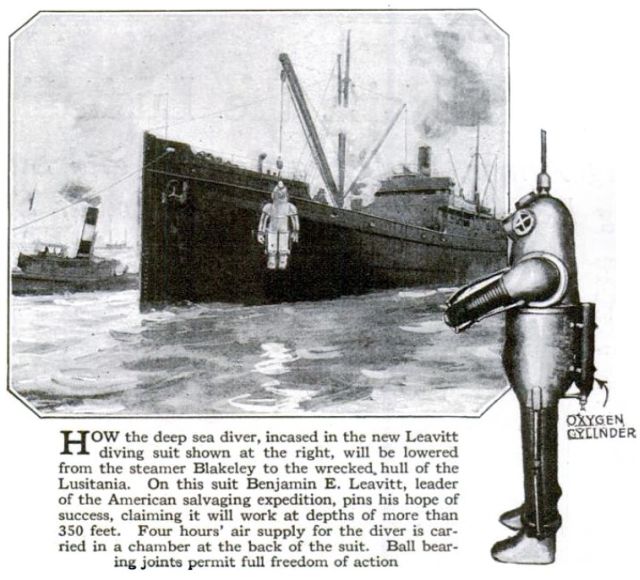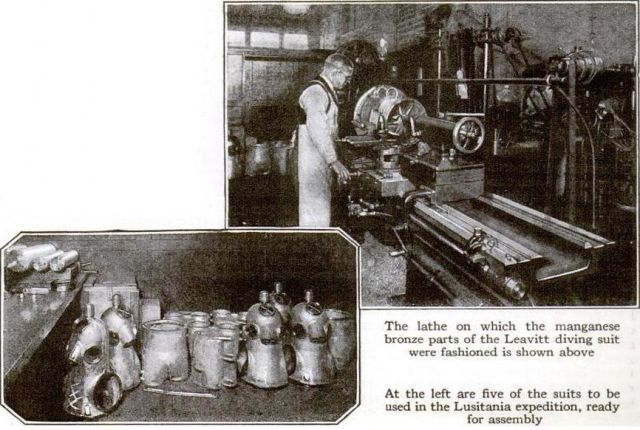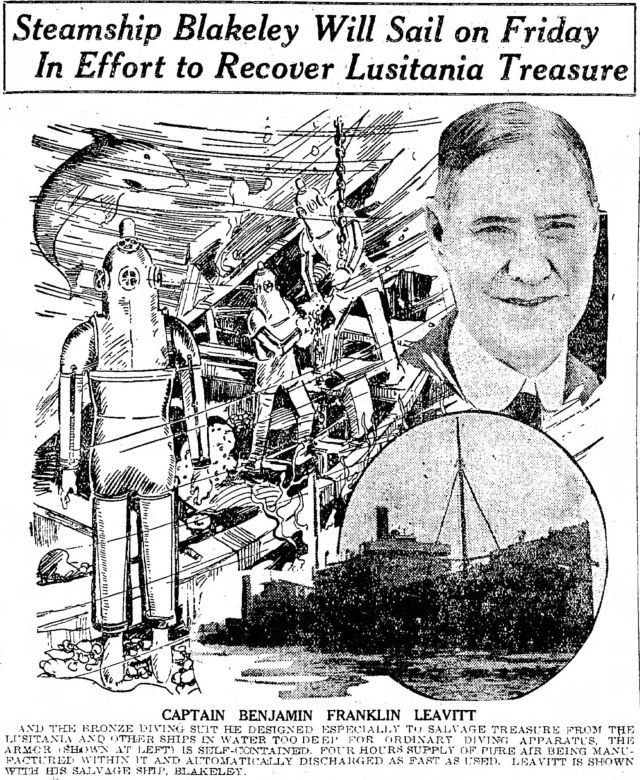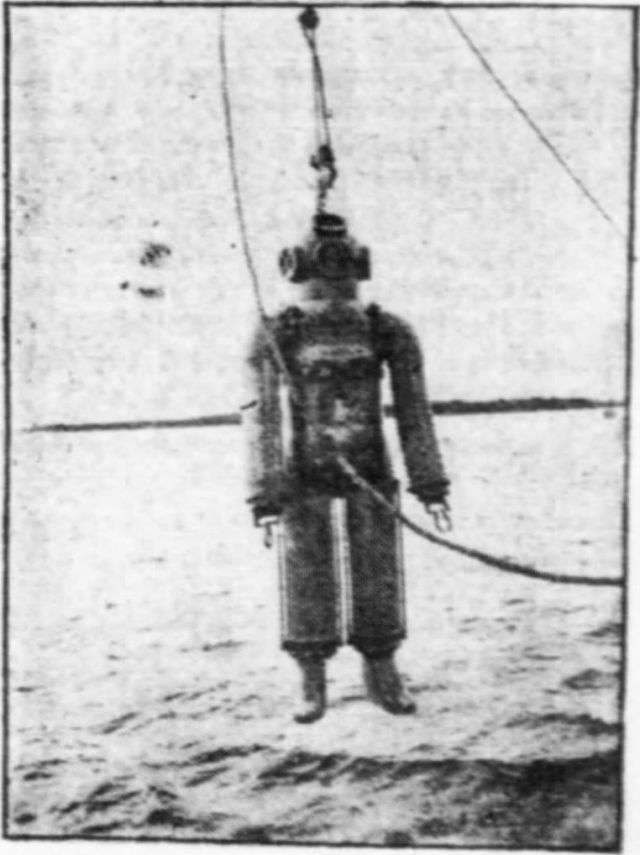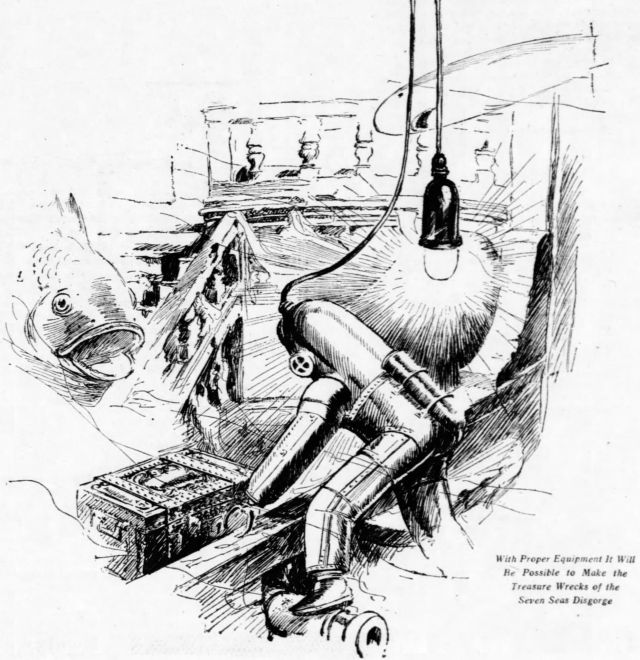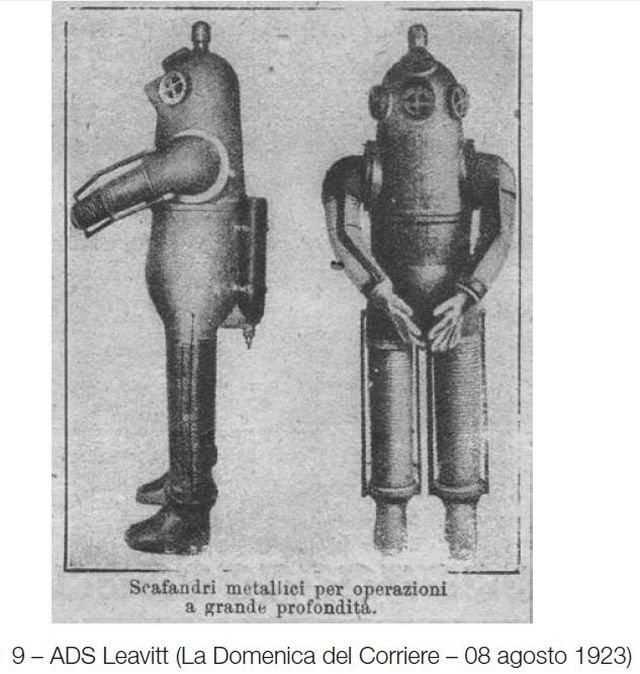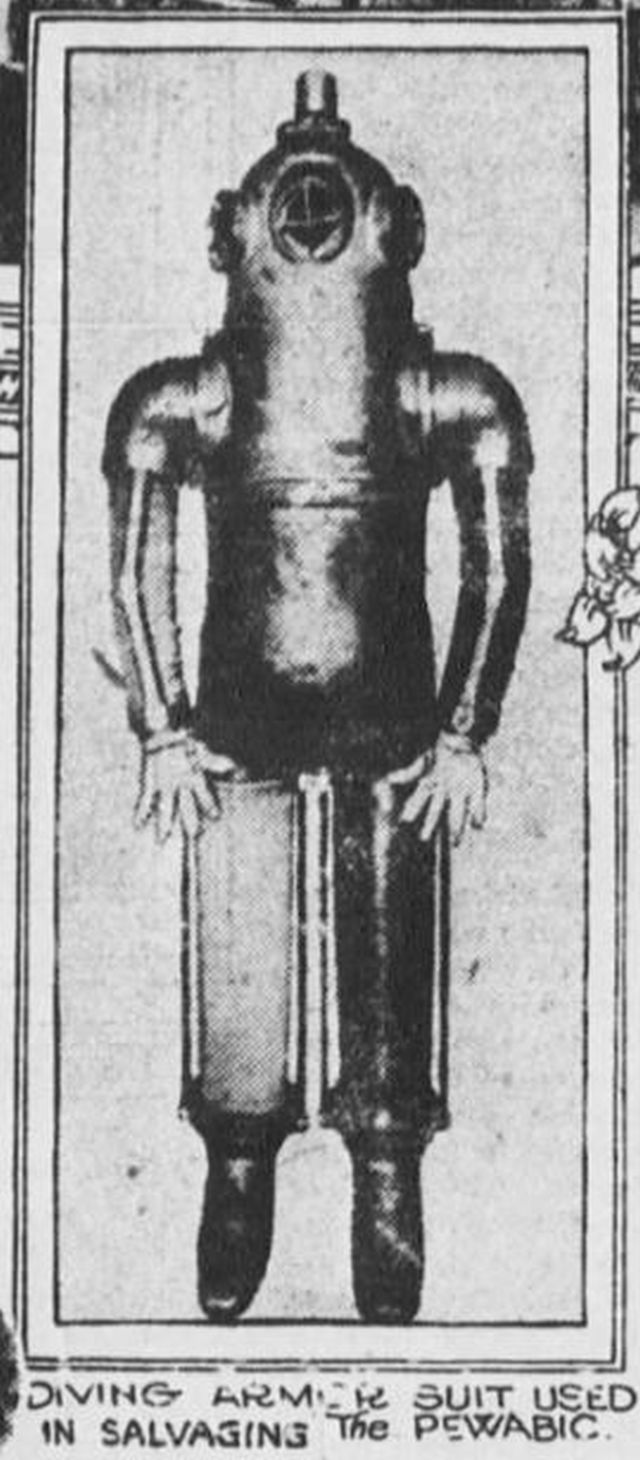The 1917 version of the Leavitt deep-sea suit.
Publication number US1327679 A
Publication type Grant
Publication date Jan 13, 1920
Filing date Jan 15, 1917
Priority date Jan 15, 1917
Inventors Leavitt Benjamin F
Original Assignee Leavitt Diving Armor Company
The invention relates to improvements in diving apparatus and its object is to provide a diving armor designed to permit a diver to descend to depths where the hydrostatic pressure is comparatively great, and which will allow sufficient use and freedom of motion of the limbs, hands and feet to permit working at such depths.
Other objects are to facilitate the assembling and taking apart of the sections comprising the armor; to efficiently protect the electrical connections; to render the supporting cable and electrical connections quick-detachable from the armor; and to provide a safe air supply system that will eliminate hose connections to the surface.
The object to the left of the image is Leavitt's other invention, the deep-sea electric lamp. See US patent number US1611651.
Multiple Leavitt suits being manufactured.
Source: Popular Science, August 1922.
A frontal view of the Leavitt all-metal deep water diving suit. The only connection with the surface is a special steel cable by which the diver is lowered and raised. This cable has in its core a telephone circuit which permits the diver to maintain vocal communications with person on the salvage craft. This particular suit is equipped with heavy rubbers gloves which could be used up to 150 feet. At greater depths the suit would be fitted with pincers or tongs operated from within sleeves of the armor.
Source: here.
Source: www.hdsitalia.org
Diving Armor Suit used in salvaging the Pewabic..
Image and text source: The Sun and The New York Herald, May 9, 1920.
Only Woman Salvager Regains Riches From Lakes and Sea.
Mrs. Margaret Campbell Goodman
….
Always a Dreamer
"I was always a dreamer," she says, "and I can hardly remember when I first began to dream that there was a fortune in deep sea salvage. The reality came when I became interested in a suit of diving armor. I was one of twenty-six who saw experiments with it, where the inventor demonstrated in Grand Traverse Bay, Michigan. Its possibilities by descending 361 feet and remaining under water forty-five minutes.
"This first deep sea suit had no strut rods. A commercial tube was used that was covered with diving suit cloth and the armored diver was raised and lowered by a manila rope. The armor had a helmet, equipped so the diver was in constant communication with the ship above him, but in this first successful descent the telephone was not detachable and the telephone line was a separate cable. The safety valve was at the bottom of the caustic soda cartridge. Air was not pumped down to the diver, but furnished from a tank and sent in a continuous current after being breathed through the soda cartridge and thus cleansed of carbonic gas. The diver could remain down for the life of this soda cartridge, about an hour.
"The improved armor has strut rods and a special interlocked, tapered, very flexible tube made of copper braided with wire covered with pure gum rubber. The raising cable is of steel with the telephone in the centre, and is connected directly to the helmet. The phone bracket is screwed into the helmet and is detachable. The glasses are one-half-inch smaller than in the first model and the frontal light is tipped to an angle of 30 degrees. The armor is fastened together at the breast and shoulders with bayonet lock and the arm tubes are detachable from the shoulders." ….
See other early Underwater Robots here.
